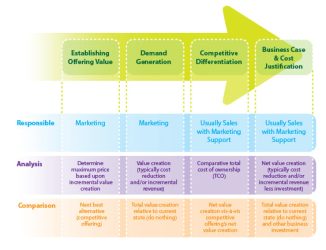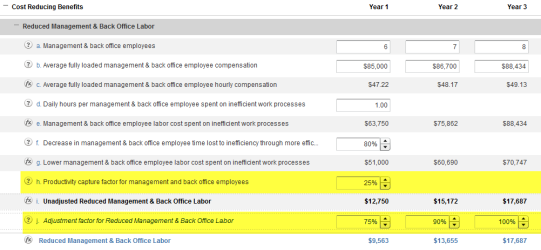We recently wrote about the correct usage of the term ROI in a B2B sales. A great follow-up question we received was, “How do I know what to show my customer, ROI or NPV (net present value)?” Let’s take a look at the proper use case for each.
Subscribe to the Value Selling Blog
DISPLAY POSTS BY
Topics
- Assessment Tools 6
- B2B Selling 71
- Business Case 17
- Demand Generation Solutions 3
- Market Strategy 13
- Marketing 8
- Objection Handling 28
- Product Management 3
- ROI Tools 34
- Sales Enablement Solutions 10
- Sales Strategy 34
- Success Stories 6
- TCO Tools 12
- Trade Shows 3
- Value Calculators 18
- Value Pricing 21
- Value Proposition 36
- Value Selling 55
Most Popular
- All Post
- Assessment Tools
- B2B Selling
- Business Case
- Demand Generation Solutions
- Market Strategy
- Marketing
- Objection Handling
- Product Management
- ROI Tools
- Sales Enablement Solutions
- Sales Strategy
- Success Stories
- TCO Tools
- Trade Shows
- Value Calculators
- Value Pricing
- Value Proposition
- Value Selling
Subscribe to the Value Selling Blog
Topics
- Assessment Tools 6
- B2B Selling 71
- Business Case 17
- Demand Generation Solutions 3
- Market Strategy 13
- Marketing 8
- Objection Handling 28
- Product Management 3
- ROI Tools 34
- Sales Enablement Solutions 10
- Sales Strategy 34
- Success Stories 6
- TCO Tools 12
- Trade Shows 3
- Value Calculators 18
- Value Pricing 21
- Value Proposition 36
- Value Selling 55
Most Popular
- All Post
- Assessment Tools
- B2B Selling
- Business Case
- Demand Generation Solutions
- Market Strategy
- Marketing
- Objection Handling
- Product Management
- ROI Tools
- Sales Enablement Solutions
- Sales Strategy
- Success Stories
- TCO Tools
- Trade Shows
- Value Calculators
- Value Pricing
- Value Proposition
- Value Selling
Subscribe to the Value Selling Blog
Topics
- Assessment Tools 6
- B2B Selling 71
- Business Case 17
- Demand Generation Solutions 3
- Market Strategy 13
- Marketing 8
- Objection Handling 28
- Product Management 3
- ROI Tools 34
- Sales Enablement Solutions 10
- Sales Strategy 34
- Success Stories 6
- TCO Tools 12
- Trade Shows 3
- Value Calculators 18
- Value Pricing 21
- Value Proposition 36
- Value Selling 55
Most Popular
- All Post
- Assessment Tools
- B2B Selling
- Business Case
- Demand Generation Solutions
- Market Strategy
- Marketing
- Objection Handling
- Product Management
- ROI Tools
- Sales Enablement Solutions
- Sales Strategy
- Success Stories
- TCO Tools
- Trade Shows
- Value Calculators
- Value Pricing
- Value Proposition
- Value Selling











